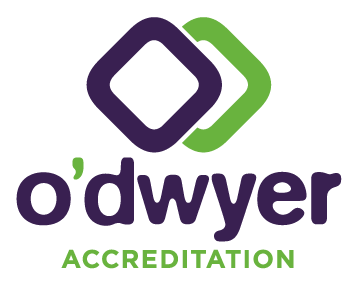To secure NATA accreditation for your laboratory, NATA assesses you against defined criteria, a mix of international standards and local criteria (NATA accreditation requirements) developed by NATA.
There can be 20 to 30 documents to go through and identify which requirements may apply to your laboratory. If NATA has told you to download all of these documents and make sure you understand them, you may be feeling overwhelmed. We don’t blame you!
Navigating NATA requirements and paperwork
Here are the essential criteria documents you’ll need:
- ISO/IEC 17025 General Requirements for the competence of testing and calibration laboratories.
- ISO 15189 Medical Laboratories – Requirements for quality and competence.
- OECD Principles on Good Laboratory Practice
These international standards outline requirements for laboratories to demonstrate they operate competently and generate valid test results.
They’re general requirements, with no rigid schedules or test requirements. The standards emphasise monitoring risk and identifying opportunities. The management system requirements in both laboratory accreditation standards align closely with the requirements of ISO 9001.
https://nata.com.au/accreditation/nata-sectors/NATA accreditation requirements vary according to what type of testing you are doing. (Check out how NATA groups different kinds of labs by industries here.)
Additional NATA accreditation criteria
You can find the details of these criteria in the following documents:
- ISO 17025 Standard Application Document (affectionately known as the SAD!)
or ISO 15189 Standard Application Document
or Principles of Good Laboratory Practice (GLP) Application Document - Equipment Assurance Criteria & General Equipment Table
- NATA Rules
- NATA Procedures for Accreditation
You will also need to select from a range of other documents, depending on which field of testing your laboratory is in:
- Specific Accreditation Criteria (ISO 17025) for your industry – we call these SACs. The SAC relevant to you might be called an appendix, an annex, or both.
- NPAAC standards for human pathology
- OECD Guides on GLP
- 20-30 other documents, classified into general accreditation criteria, general accreditation guidance, specific accreditation criteria and specific accreditation guidance.
See the complete list of NATA accreditation criteria here.
Standard NATA application documents
The SADs (standard application documents) contain additional criteria for ISO 17025 and 15189 laboratories that NATA developed based on their rules and their interpretation of those standards.
Plus, there’s a ‘RAD’ (recognition application document) for OECD GLP.
General NATA accreditation requirements & guidance
The General Accreditation Criteria (GAC) and General Accreditation Guidance (GAG) are documents that usually apply to all laboratories.
Of course, the guidance documents are not mandatory – you get to decide if you will adopt those recommendations or not.
Specific accreditation criteria & guidance
The Specific Accreditation Criteria (SAC) for your area of testing (or ISO 15189 Supplementary Requirements for Medical Testing) will seem a lot more relevant to your laboratory.
There are separate documents for each industry sector, and in some cases, there are appendices AND annexes for your industry sector (though there is no SAC for OECD GLP).
These contain specific information on particular examples. As they can include additional accreditation criteria, you can’t ignore them. Many have self-explanatory titles, so you can quickly decide if they are relevant to you. Others, you have to read through thoroughly to find out if there’s anything relevant to you.
Some SACs include “interpretive criteria” relating to relevant issues in your industry. There might be a list of equipment and recommended calibration frequencies – something that is not mandatory to follow but can be a helpful guide.
General equipment table
The General Equipment Table gives you a suggested equipment calibration frequency for many standard pieces of equipment.
Equipment Assurance, in-house Calibration and Equipment Verification should guide the overarching approach to setting up your calibration program,
Understanding NATA’s rules
The Rules contain the information you need to know about “NATA-endorsed” test reports – when you can issue them and when you can’t. There is also information about how to use your NATA accreditation in advertising material.
The rest of the rules are about how NATA operates, its management board, what happens if NATA thinks that your laboratory should not be accredited any more (‘suspension’) and so on.
It’s worth reading through them when you are away from the lab’s day-to-day business and thinking about how the rules might apply in your laboratory.


